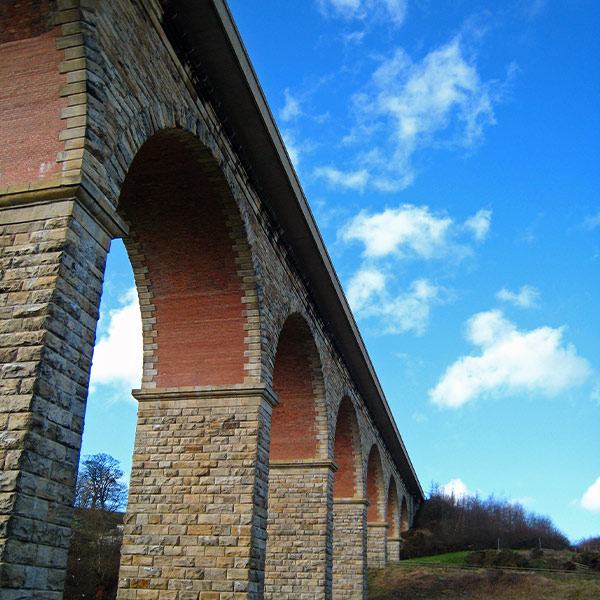The upheaval of the 20th Century and aftermath of Two World Wars impacted on Bishop Auckland, like everywhere else.
Railway services to the area reduced significantly during the 20th century. The Newton Cap railway viaduct, which carried the line to Durham, became redundant in the late 1960s. This was linked to the decline in coal mining and large scale industry in Bishop Auckland and the change of the town to a more service and shopping hub.
During the 20th Century Bishop Auckland Football Club had huge success and became known Nationally. Between 1893 and 1988, the club won the Northern League championship a record 19 times. The most successful period in the Northern League came between 1947 and 1956 when the team never finished below second place. During this period they were champions seven times and runners-up on three occasions.
The upheaval of the 20th Century and aftermath of Two World Wars impacted on Bishop Auckland, like everywhere else.
Railway services to the area reduced significantly during the 20th century. The Newton Cap railway viaduct, which carried the line to Durham, became redundant in the late 1960s. This was linked to the decline in coal mining and large scale industry in Bishop Auckland and the change of the town to a more service and shopping hub.
During the 20th Century Bishop Auckland Football Club had huge success and became known Nationally. Between 1893 and 1988, the club won the Northern League championship a record 19 times. The most successful period in the Northern League came between 1947 and 1956 when the team never finished below second place. During this period they were champions seven times and runners-up on three occasions.

However, Bishop Auckland became nationally known in the 20th century for the achievements of the football club which held an unrivalled record in the Amateur Cup.
Bishop Auckland FC appeared in the final 18 times, and winning 10 times, including a memorable three years in a row in 1955, 1956 and 1957. Their national status was so high that after the Munich air disaster, three of the Bishop Auckland FC players were asked to join Manchester United to help re-establish their team.
Despite times when there were revivals of economic fortune for Bishop Auckland, it was on a slow decline.
The Viaduct had closed in 1968 following the general cuts in the National Railway network in the 1960s. It could have been lost but Bishop Auckland Civic Society lobbied for it to be retained. As a result the Viaduct was converted to take road traffic and was reopened in 1994-5.

However, Bishop Auckland became nationally known in the 20th century for the achievements of the football club which held an unrivalled record in the Amateur Cup.
Bishop Auckland FC appeared in the final 18 times, and winning 10 times, including a memorable three years in a row in 1955, 1956 and 1957. Their national status was so high that after the Munich air disaster, three of the Bishop Auckland FC players were asked to join Manchester United to help re-establish their team.
Despite times when there were revivals of economic fortune for Bishop Auckland, it was on a slow decline.
The Viaduct had closed in 1968 following the general cuts in the National Railway network in the 1960s. It could have been lost but Bishop Auckland Civic Society lobbied for it to be retained. As a result the Viaduct was converted to take road traffic and was reopened in 1994-5.

